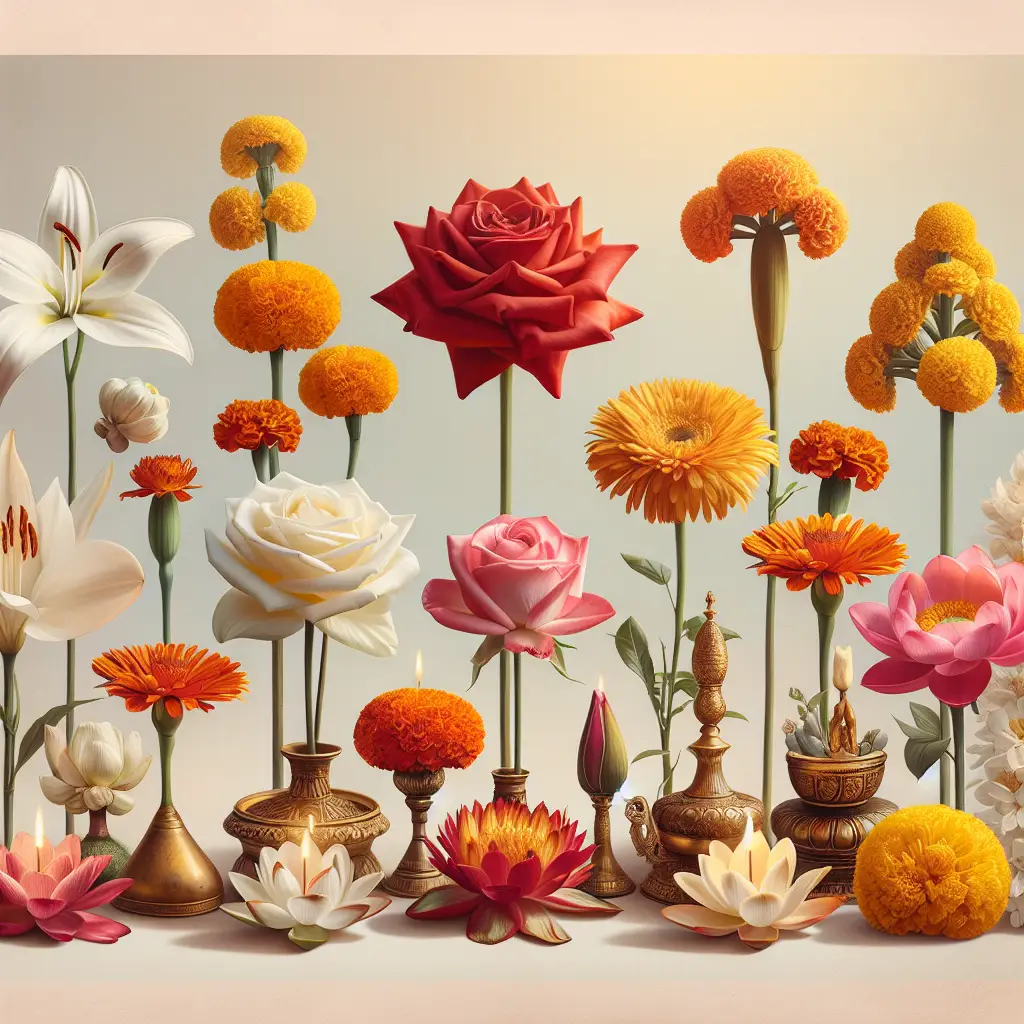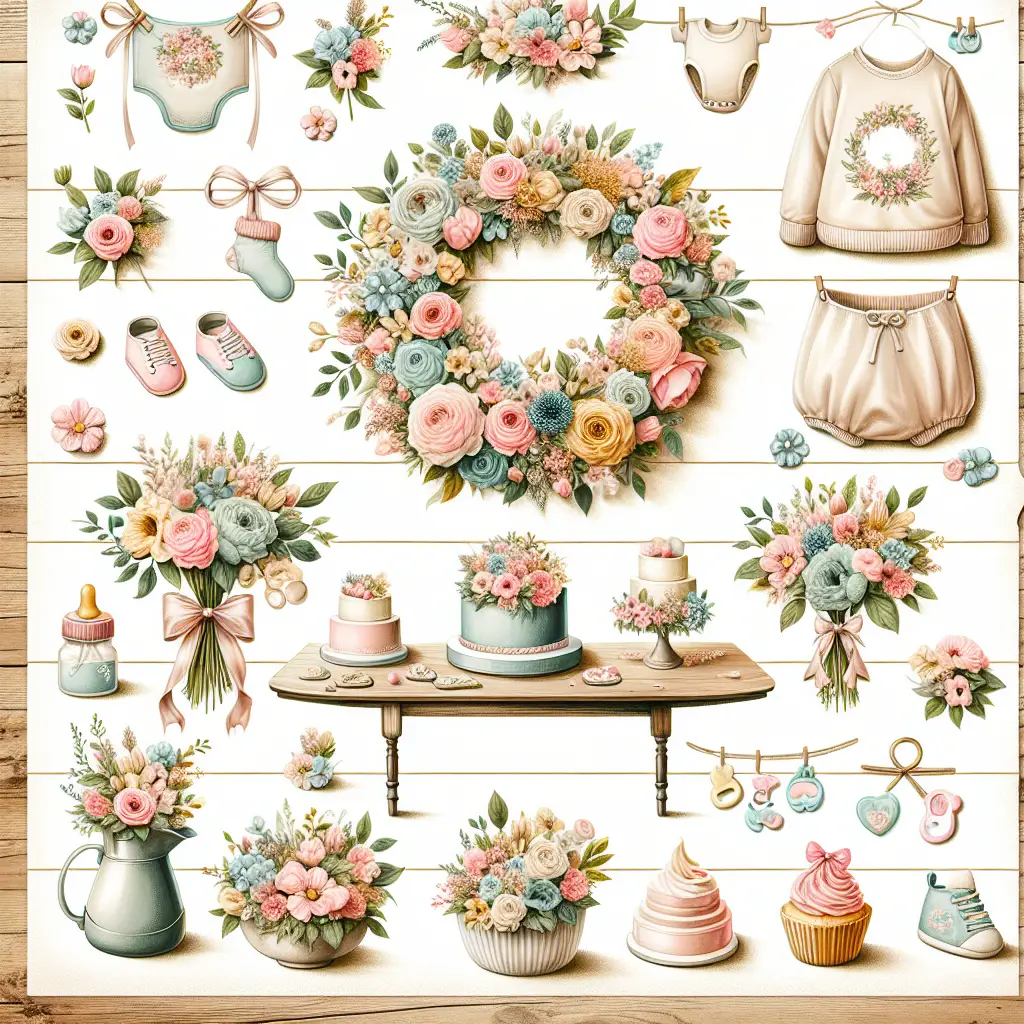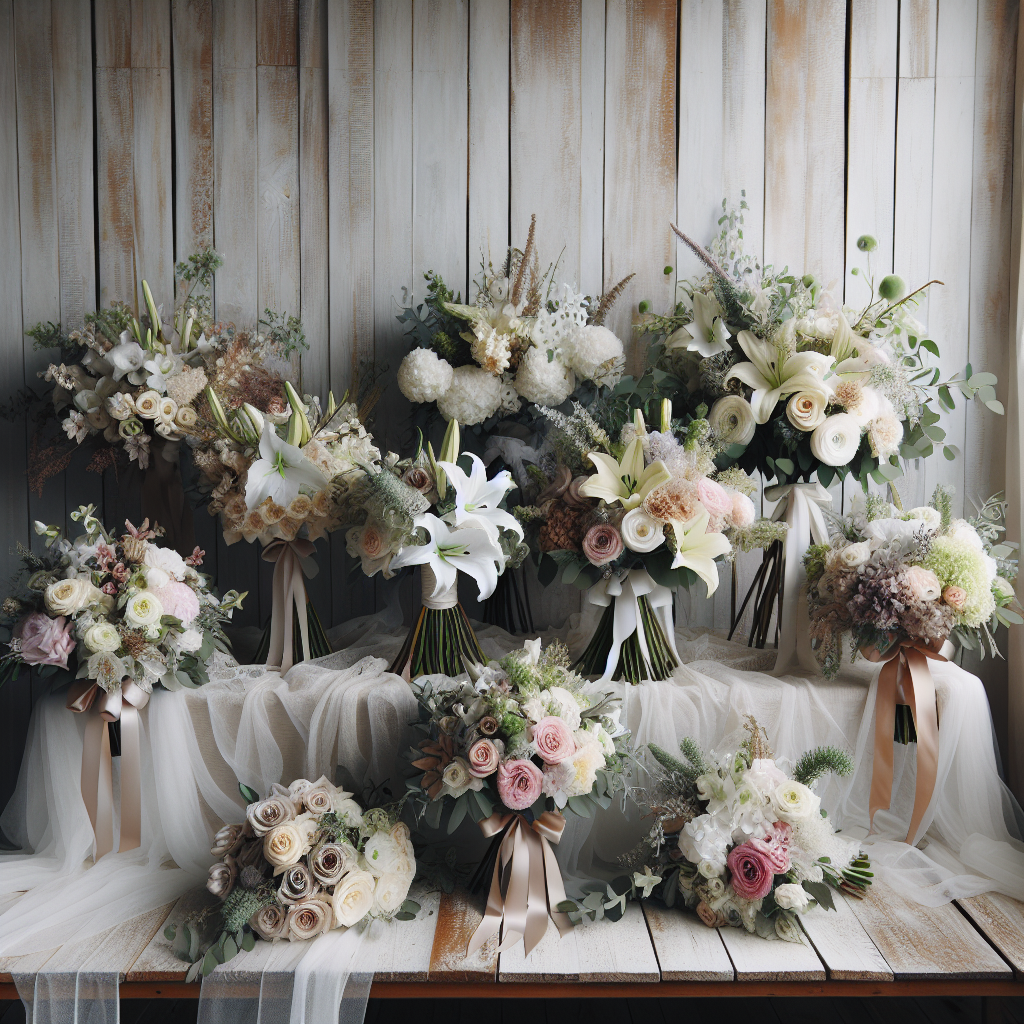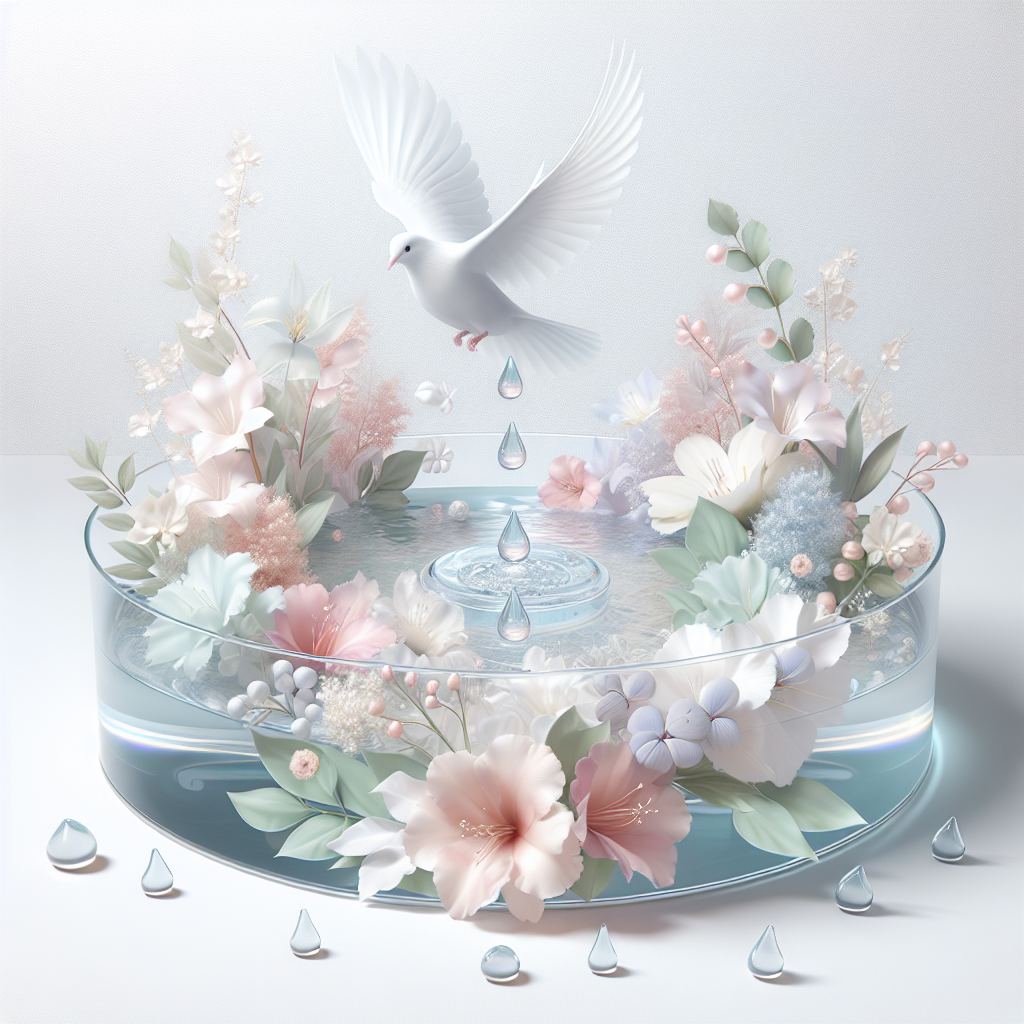Flowers for Religious Ceremonies: Choosing Appropriately
Published January 18, 2024 at 4:47 am

The Significance of Flowers in Religious Ceremonies
Throughout history, flowers have played an integral role in religious ceremonies across different cultures and traditions. They are not just decorative elements but powerful symbols conveying a myriad of meanings and emotions. When choosing flowers for such sacred occasions, understanding their significance is as important as appreciating their beauty.
For instance, the white lily is often associated with purity and is prevalent in Christian ceremonies, while the lotus has profound connotations in Hinduism and Buddhism, symbolizing enlightenment and rebirth.
Cultural Sensitivity and Flower Selection
Selecting flowers for religious ceremonies requires cultural sensitivity and awareness. Each religion attributes different meanings to certain flowers, which must be taken into consideration to convey respect and the desired sentiment.
The chrysanthemum, for example, is viewed as a symbol of death and mourning in some European cultures, while in Asia, it can represent longevity and joy. Thus, thorough research and understanding are imperative.
Popular Flowers and Their Religious Contexts
Lilies, roses, and jasmine often top the list of flowers chosen for religious ceremonies. Lilies are favored in Christian events, primarily Easter, symbolizing resurrection. Roses have universal appeal and can be found in Islamic, Christian, and Hindu ceremonies, often signifying love and devotion.
Jasmine, with its sweet fragrance, is a staple in Hindu offerings and weddings, encapsulating purity and simplicity.
Considering the Seasonality of Flowers
When choosing flowers for religious ceremonies, it’s also essential to consider their seasonality. Opting for seasonal flowers ensures freshness, vibrant colors, and availability. For example, marigolds are widely used in the autumn season for events like Dia de Los Muertos in Mexico and Diwali in India.
Being mindful of the seasons enriches the ceremony with flowers that are at their peak, enhancing the spiritual ambience with their natural splendor.
Choosing and Caring for Flowers with Special Meanings
In Christianity, the passion flower is revered for its representation of the crucifixion, with its components symbolizing different aspects of the event. For Hindus, the marigold is auspicious for its bright color reminiscent of the sun, signifying a powerful life force.
When acquiring these flowers, it’s crucial to partner with florists who understand their importance and handle them with the care they deserve, ensuring they arrive at the ceremony in pristine condition.
The Art of Decorating with Religious Flowers
How flowers are arranged and presented in a religious ceremony can be as significant as the flowers themselves. Creating visually stunning displays while honoring tradition requires creativity and respect for the ceremony’s rituals and customs.
For example, garlands of jasmine and roses are often used in South Asian weddings draped around the couple, symbolizing a bond of love and unity.
Personalizing Ceremonies with Unique Flower Choices
While traditional flowers are a safe choice, personalizing a ceremony with unique flowers that have a special meaning to the individual or community can make the event even more memorable.
Incorporating a departed loved one’s favorite blooms into a memorial service can be a touching tribute that personalizes the ceremony and honors their memory.
Durability and Longevity for All-Day Events
Many religious ceremonies span several hours or even days, necessitating the selection of flowers that will remain fresh throughout the event. Orchids and succulents are excellent choices for their longevity and minimal need for maintenance.
These resilient blooms not only stand the test of time but can also withstand the rigors of processions and handling by many participants.
Ethical and Sustainable Flower Farming Practices
In today’s environmentally conscious world, sourcing flowers from suppliers that adhere to ethical and sustainable practices is becoming increasingly important for event organizers and participants alike.
Flowers grown with responsible farming practices ensure minimal impact on the environment, and choosing certified organic flowers can also be a statement of the ceremony’s commitment to sustainability.
Navigating Allergies and Sensitivities
With the prevalence of allergies and sensitivities, it is essential to choose flowers that will not cause discomfort or health issues among participants. Hypoallergenic flowers like roses, peonies, and tulips can be considered to create an inclusive environment for all.
Understanding the potential impact of pollen and fragrance on those gathered is key to ensuring a comfortable and safe ceremony for everyone in attendance.
Incorporating Symbolism in Bouquets and Arrangements
Floral bouquets and arrangements carry their own language of symbolism. For instance, a bridal bouquet in a Christian wedding may include myrtle, a plant associated with love and considered sacred to Venus, the goddess of love.
Taking the time to compose these arrangements thoughtfully can impart deeper meaning and connection to the symbolism inherent in the religious observance.
Conclusion
Flowers are more than just ornamentation for religious ceremonies; they are emblems of the sacred and the profane, tokens of the fleeting nature of life, and symbols of the eternal cycle of rebirth. When artfully chosen and arranged, they can elevate a religious ceremony, providing a visual and aromatic medium that enhances the spiritual experience for all.
Whatever the occasion, whatever the creed, when chosen and used with thought, respect, and a sense of the divine, flowers can speak a universal language that resonates with hearts and souls, binding us all in the shared human experiences of celebration, reverence, and remembrance.
Flowers as a Reflection of the Spiritual Journey
Flowers can mirror the spiritual journey of faith in a religious ceremony. As seeds grow into blossoms, they reflect the blossoming of spiritual awareness in individuals. This growth cycle resonates deeply during rites of passage such as baptisms, weddings, and funerals.
The selection of specific blooms like the pure white calla lily, often used in weddings and baptisms, conveys a message of new beginnings and faithfulness, making them an ideal choice for marking significant life milestones.
Engaging with Local and Seasonal Flora
Engaging with local flora not only supports community-based businesses but also ensures that the flowers for your ceremony are in harmony with the local environment. It can be deeply meaningful to use flowers endemic to the region where the ceremony takes place, fostering a sense of community and belongingness.
Local florists can provide invaluable guidance in this aspect, recommending flowers like wildflowers for a rustic, nature-rooted ceremony or indigenous blooms that might carry spiritual significance within the local culture.
Selecting Flowers Across Various Ceremonies
Understanding the nuances of flower selection for different ceremonies is crucial. For a Bar or Bat Mitzvah in the Jewish faith, one might consider flowers like the lily of the valley, which represents the return of happiness.
In Buddhist ceremonies, flowers like the peony, symbolizing prosperity and honor, can be adopted, demonstrating an understanding of the cultural and spiritual landscape of the celebrants.
Diving into the Symbolism of Color in Floral Arrangements
The color of the flowers chosen for a religious ceremony is as important as the type of flower itself. Red flowers often symbolize passion and sacrifice, making them apt for commemorations of martyred saints in Christianity, whereas green, the color of rebirth and hope, can beautify Islamic celebrations like Eid with ferns and foliage.
Aligning the color symbolism with the ceremony’s underlying message is a thoughtful detail that adds emotional depth to the decor.
Finding Eco-friendly and Socially Conscious Floral Options
The ethics behind the flower choice is becoming a concern for an increasing number of people. Hence, opting for fair-trade flowers can align the ceremony’s ethos with global social justice causes.
Organizations like Fair Trade Certified™ offer certifications to flowers that are produced according to rigorous social, environmental, and economic standards, offering peace of mind to those with ethical considerations.
Integrating Non-Traditional Elements for a Modern Twist
For those looking to modernize their religious ceremonies, integrating non-traditional floral elements such as air plants or even edible flowers can offer a unique and contemporary twist to the traditional use of flowers.
Airplants can create stunningly modern arrangements, appealing to younger generations or those seeking a more avant-garde approach to their religious celebrations.
Techniques to Extend the Life of Cut Flowers
To ensure that flowers maintain their beauty throughout long ceremonies, employing techniques to extend their life is key. Cutting stems at an angle for maximum water absorption and using specialized preservatives can help sustain their vibrancy.
Asking your supplier about the best practices for each flower type is also recommended to guarantee the perfect look from start to finish of the event.
Flowers for Healing and Comfort in Religious Ceremonies
Flowers have therapeutic properties that can be specifically used for healing and comfort in ceremonies. The tranquil scent of lavender is known for its calming properties, making it suitable for memorials or services focused on solace and peace.
Healing flowers such as chamomile, which can be brewed into a soothing tea, might also provide comfort during more somber or reflective ceremonies, demonstrating a caring and holistic approach to flower selection.
Memory-Making with DIY Flower Arrangements
Creating DIY flower arrangements for religious ceremonies can imbue the event with personal sentiment and foster a communal spirit. This hands-on approach allows for a shared experience in preparing floral decorations and can become a cherished memory for those involved.
Workshops or sessions with a florist before the event can not only be a bonding experience but also empower individuals with the joy of creating beauty with their own hands.
Accessibility and Inclusivity in Floral Decorations
Ensuring that floral decorations in religious ceremonies are accessible and don’t obstruct movement or view is a consideration that reflects thoughtfulness and inclusivity. It is essential to create arrangements that everyone can enjoy without hindrance, especially for attendees with mobility concerns.
Low-profile centerpieces or strategically placed standing arrangements can contribute to an inclusive atmosphere while maintaining aesthetic appeal.
Impact of Fragrance on Ceremony Ambiance
The fragrance of flowers can significantly impact the ambiance of a religious ceremony. Aromatic flowers like gardenias and lilacs can infuse the air with natural perfume, enhancing the spiritual and sensory experience of the attendees.
Bearing in mind the potency of a flower’s scent can lead to a harmonious balance, avoiding any overpowering or distracting fragrances during a solemn service.
Flower Care and Handling Ahead of the Ceremony
Proper care and handling of flowers ahead of the ceremony are crucial for optimum presentation. Recommendations include keeping blooms in a cool environment away from direct sunlight and ensuring the flowers are well-hydrated before the event begins.
This care extends to transport as well, where flowers should be secured and protected from elements like wind or extreme temperatures, guaranteeing their pristine condition upon arrival.
The Role of Flowers in Enhancing Religious Narratives
The use of flowers can play an illustrative role in enhancing the narratives of religious ceremonies. By choosing flowers that are mentioned in sacred texts or myths, participants can feel a deeper connection to the stories and traditions of their faith.
For instance, the blooms of the hyssop plant can be used in Christian ceremonies to represent cleansing and purification, as mentioned in the Bible.
Flowers and Eco-Friendly Alternatives in the Digital Age
In the digital age, consideration can also be given to incorporating sustainable and reusable elements in place of or alongside fresh flowers. LED-lit faux flowers or fabric arrangements can serve as eco-friendly alternatives, reducing waste while still providing aesthetic beauty.
These alternatives can also be shared virtually through digital pictures or videos, spreading the visual joy of the ceremony to those unable to attend in person.
Conclusion and Final Thoughts
In conclusion, when chosen thoughtfully and with intention, flowers serve as an essential element in religious ceremonies, bridging the secular with the divine. They help articulate the inexpressible, deepen the ceremonial impact, and facilitate a profound connection between attendees and the sacred rites being performed.
May your selections bloom with meaning, and may the flowers you choose resonate with the hearts of all those present, creating a shared experience that is both beautiful and transcendent, reflective of the spiritual essence at the heart of all religious ceremonies.
The Impact of Ethical Flower Sourcing on Religious Celebrations
In a world where ethical considerations are increasingly coming to the fore, the impact of ethically sourced flowers on religious celebrations cannot be overstated. Choosing flowers that are sustainably grown shows a commitment to environmental stewardship—a value that resonates with many spiritual teachings.
For example, selecting roses from Veriflora-certified farms assures attendees that the beauty before them did not come at the cost of the well-being of laborers or the earth. The farm’s commitment to sustainability and fair labor practices can set a tone of mindfulness and respect for the ceremony.
Navigating Budget Constraints with Grace and Style
Ceremonies are often bound by budgets, but this need not limit the splendor of the event. Cost-effective options such as in-season and locally sourced flowers can reduce expenses while still creating a breathtaking environment.
Suppose you are coordinating a multi-day festival like Pongal or Passover. In that case, consider using robust sunflowers, which are not just economical but also symbolize faithfulness and devotion in many cultures—an added layer of meaning for the festivity.
Creative Alternatives to Traditional Floral Arrangements
Gone are the days when religious ceremonies adhered strictly to traditional floral arrangements. Integrating creative floral alternatives such as paper flowers or fabric blossoms allows for customizability and can be a thoughtful nod to environmental responsibility.
Additionally, these alternatives are often keepsakes for guests, perpetuating the memories of the daylong after the ceremony concludes. For example, handcrafted paper peonies can make a statement at a Buddhist ceremony while being a memento for attendees.
Exploring the Language of Flowers in Interfaith Ceremonies
In our increasingly connected world, interfaith ceremonies are becoming more common, and the language of flowers can be a beautiful, unifying element. Melding different botanical cultures requires a thoughtful blend of flora that respects and celebrates all traditions involved.
In interfaith weddings, a combination of flowers like the olive branch, a peace symbol, alongside other culturally significant flowers represents the joining of two individuals and their backgrounds in a harmonious union.
The Integration of Technology in Floral Design for Ceremonies
Technology is transforming the way we think about and interact with flowers in religious settings. Floral designers now use technology to create show-stopping pieces that can change and evolve with the ceremony’s flow.
For example, arrangements with discreetly integrated LED lighting add a dynamic energy to evening events, subtly shifting the ambiance as the ceremony progresses and highlighting the symbolism of each phase.
Supporting Community Through Flower Purchases
Choosing where to source flowers for religious ceremonies can also be an opportunity to support the local community. Patronizing local growers or florists can contribute to the community’s economic stability and strength.
This community engagement is especially significant for ceremonies like Quinceañeras and Bat Mitzvahs, which often emphasize communal values and coming of age within that community.
Conclusion and Final Thoughts
Flowers, with their profound beauty and symbolism, are intrinsic to the fabric of religious ceremonies. They transcend the barriers of language and culture, uniting us in a shared appreciation for the sacred. Making informed and thoughtful choices about flower selection can reflect the deeper values and principles at the heart of spiritual observances, making each ceremony not just a momentary affair but part of a larger tapestry of faith, community, and ethical living.
Let the blooms you choose for your sacred occasions be those that uphold the sanctity of tradition while bearing witness to a forward-looking, inclusive, and compassionate worldview.
Shop more on Amazon

